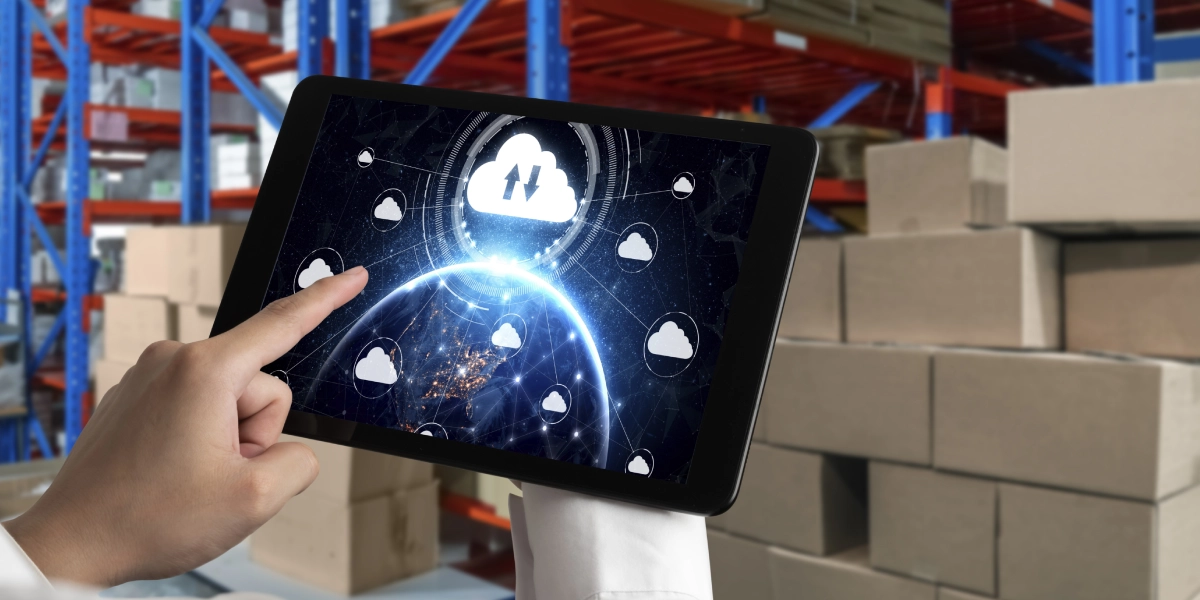UK freight and logistics face tight margins. Demand is choppy. Compliance is heavier. Fuel still costs a lot. Cloud accounting for freight and logistics companies helps you keep control. It cuts admin, speeds cash, and sharpens decisions.
What is changing now
- Road freight activity rose in 2024. GB-registered HGVs lifted 1.59 billion tonnes and moved 168 billion tonne-km. Empty running was 30% of the distance. Small gains matter when margins are thin.
- Rail freight also grew. Freight moved rose 5% year-on-year to 16,536 million net tonne-km in the year to March 2025. Intermodal options remain attractive.
- Diesel averaged about 142.5p per litre in the week of 11 August 2025. Fuel control remains core to profit.
- Border rules have tightened. Safety and security (ENS) declarations for EU-to-GB imports became mandatory on 31 January 2025. Paperwork now drives real cash and time costs.
- London’s Direct Vision Standard was strengthened in late 2024. Low-rated HGVs must fit a Progressive Safe System to operate. This change affects capex and compliance planning.
- The UK has acceded to the e-CMR protocol. Electronic consignment notes reduce paper and speed billing on cross-border moves. Adoption is growing across Europe.
How cloud accounting for freight and logistics companies helps
One source of truth
Bank feeds, purchase feeds, and payroll sync each day. Job, route, and depot data flow in from TMS/WMS and telematics. Your cash, costs, and margins show in real time. Month-end closes faster. Forecasts get better.
Job and route margin
Track revenue and costs per consignment, lane, trailer, and client. Allocate fuel, ferries, tolls, driver hours, tires, and claims for each job. See gross margin per load. Flag underperforming customers and routes. Stop loss-making work early.
Faster billing and cash
Link ePOD/e-CMR to invoices. Bill the same day. Queries drop because proof is attached. Set automated reminders and dunning processes based on the age and value of outstanding invoices. DSO falls. Cash improves.
Fuel and fleet control
Import fuel card data. Match to vehicles, drivers, and jobs. See cost per mile and per drop. Spot idling and detours. Plan refuelling on cheaper lanes. Use rules to catch off-route fills and missing receipts. Attach workshops, tires, and OEM service plans to each asset. Keep depreciation separate from repairs. Lenders like the audit trail.
VAT, MTD, and penalties
MTD for VAT is mandatory for all VAT-registered businesses. Cloud accounting features digital recordkeeping for freight & logistics firms, and you submit your records via compatible software. Late VAT returns now use a points system. Late payments trigger penalties after 15 and 30 days. Cloud workflows reduce the risk.
Subcontractors and cross-border
Hold supplier terms, insurance, and VAT status in one place. Apply reverse charge or CIS where relevant to construction-linked moves. For EU traffic, store entry numbers and ENS data with each job. Use templates so staff code it right the first time.
Payroll and labour
Pull hours from telematics and planning tools. Map overtime, nights, allowances, and POA to cost centres. Keep holiday pay correct. Report labour costs for each route and depot. Benchmark against rate cards.
FX and forwarding
Post spot or contract rates. Revalue balances at month-end. Keep margin reports consistent when exchange rates move. Attach customs, duty, and deferment statements. Reconcile each C79 and CDS import VAT line. Variances surface fast.
KPIs that drive action
Dashboards track DSO, cash burn, cost per mile, empty miles, on-time delivery, claims rate, and workshop downtime. Data refreshes automatically. Depot teams and the board see the same truth.
Trends you can act on in 2025
- Diesel volatility: Build price bands and fuel escalators into rate cards. Review weekly against pump price data. Automate surcharges in billing.
- Border workload: Pre-populate ENS from your TMS. Store MRNs against the job. Use checklists at booking. This approach prevents fines and delays.
- Safety and ESG costs: Budget for DVS upgrades and zero-emission pilots. Track the kit as fixed assets with grants and capex tags. The ZEHID program targets c.350 heavy zero-emission trucks with c.£200m in support.
- Modal shift options: Feed rail and coastal shipping costs into job quotes. Compare real-time margin by mode. Rail volumes are rising again.
- Paperless ops: Use e-CMR with ePOD to speed billing and claims. This approach also facilitates audits and international relocations.
A phased rollout that works
Start with bank feeds and sales invoicing. Next, add job costs and fuel cards. Link ePOD/e-CMR and debtor automation. Please introduce payroll, fixed assets, and group reporting once stability is achieved. Train by role. Keep controls simple. Review KPIs weekly.
Why Choose Our Cloud Accounting Services For Freight And Logistics Companies
Freight and logistics companies face constant pressure — tight delivery schedules, rising fuel costs, compliance changes, and increasing customer demands. Apex Accountants delivers cloud accounting systems built for the pace and complexity of this sector. Our setups reflect real operations, whether you run national trunking routes, regional pallet deliveries, multi-drop courier rounds, or cross-border freight forwarding. We shape every ledger, report, and process to provide you with accurate, real-time insight into both financial performance and operational efficiency.
Solutions We Offer
Tailored Chart of Accounts
Depot managers can see exactly how their site is performing with a tailored chart of accounts. Separate tracking for each lane, client, or asset class makes it possible to pinpoint which contracts are profitable and which are draining resources.
Integrated Job Costing
Job costing tied directly to your TMS or spreadsheets gives instant clarity on load profitability. Imagine seeing, in real time, that a high-volume route is losing money because toll charges or subcontractor rates have increased — and being able to adjust pricing before the month ends.
Fuel Card Integration
Fuel card integration maps spend to vehicles and drivers. Fleet managers can quickly spot a truck running at higher-than-average cost per mile, identify excess idling from telematics data, and schedule driver briefings to cut waste.
ePOD and e-CMR Billing Links
Linking ePOD and e-CMR files to invoices allows same-day billing. International freight forwarders can include customs paperwork alongside proof of delivery, reducing payment disputes and accelerating cash collection from overseas clients.
Debtor Management Workflows
Debtor management workflows ensure overdue accounts are chased consistently. Automated reminders, call lists, and escalation rules mean no high-value invoice slips through the cracks — helping cut Days Sales Outstanding.
Supplier Coding Rules and Import VAT Control
Supplier coding rules keep duty, ferry, and toll invoices accurate every time, avoiding VAT errors that can trigger HMRC queries. For importers, deferment and CDS import VAT reconciliations ensure every C79 certificate matches ledger entries.
DVS and Permit Tracking
DVS and permit trackers prevent trucks from being grounded in London or other regulated zones. Compliance deadlines are tied to asset records, giving you alerts before penalties occur.
ZEHID Grant Tracking
ZEHID grant tracking helps operators investing in electric or hydrogen trucks monitor costs, grants, and ROI by project. This is crucial for planning the long-term shift towards zero-emission freight.
Labour Cost Per Route Analysis
Labour cost per route reporting, using telematics-linked driver hours, highlights where overtime or inefficient scheduling is eroding margins.
Rolling 13-Week Cash Flow Forecasts
Rolling 13-week cash flow forecasts keep management and lenders informed of upcoming pinch points, allowing you to plan for seasonal volume swings or delayed customer payments.
Board-Ready KPI Dashboards
Board-ready KPI dashboards mean everyone — from depot supervisors to senior directors — works from the same live figures. This transparency builds trust and speeds decision-making.
How Our Cloud Accounting Services For Freight And Logistics Companies Work
- Discovery – Routes, depots, contracts, and systems are reviewed to identify gaps and opportunities.
- Design – Processes, controls, and posting rules are created to match both operational and compliance needs.
- Build – Bank feeds, fuel card data, TMS/WMS, payroll, and ePOD solutions are connected into one system.
- Pilot – A controlled rollout at two depots tests the setup in real conditions, with adjustments made before going live network-wide.
- Rollout – Training sessions by role ensure every team member knows their part. Detailed process documents support ongoing use.
- Support – Monthly reviews with managers refine KPIs, address operational challenges, and adapt to regulation changes.
Benefits You Can Expect
- Faster month-end close and reduced manual admin for improved efficiency across freight & logistics operations.
- Lower DSO and stronger cash flow through automated invoicing and debtor management processes.
- Clear visibility of margins per route, lane, or customer with detailed, real-time financial reporting.
- Fewer payment disputes and compliance errors with digital record-keeping for freight & logistics firms.
- Clean, audit-ready records for HMRC and other regulatory bodies to support smooth inspections.
- A system built to handle future changes in border rules, DVS compliance, and zero-emission programmes.
Speak with our freight and logistics specialists today. Contact us today to book a free consultation. We’ll review your current setup, highlight quick wins, and propose a fixed-fee plan to give you tighter financial control, stronger compliance, and better business decisions — all powered by the right cloud accounting system.



